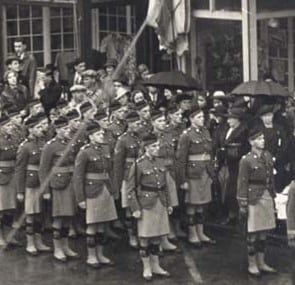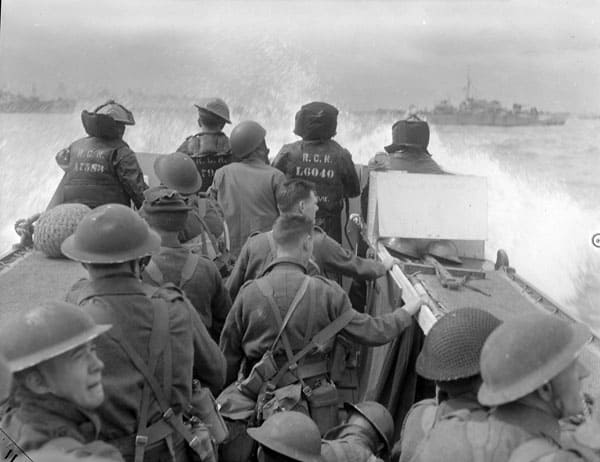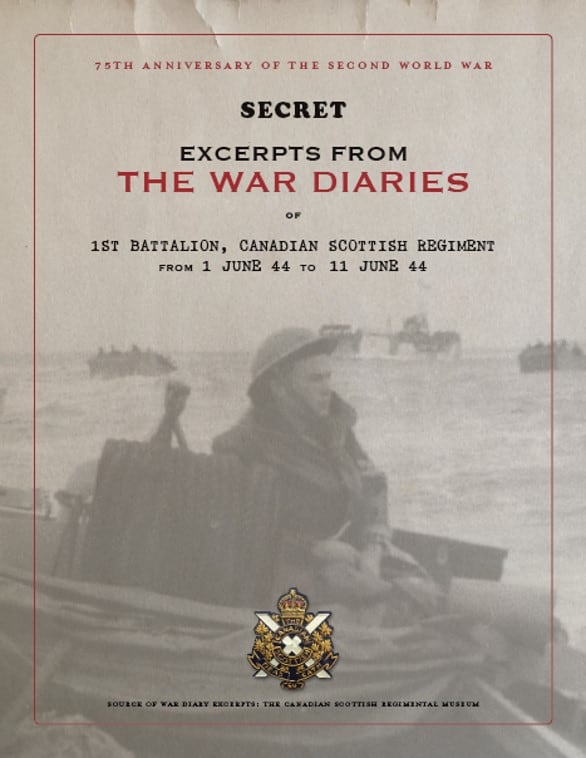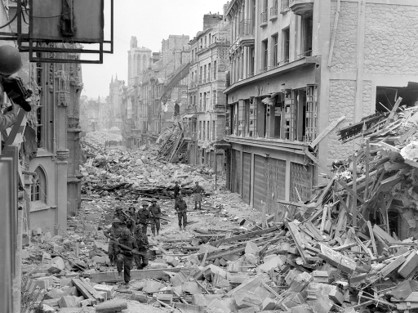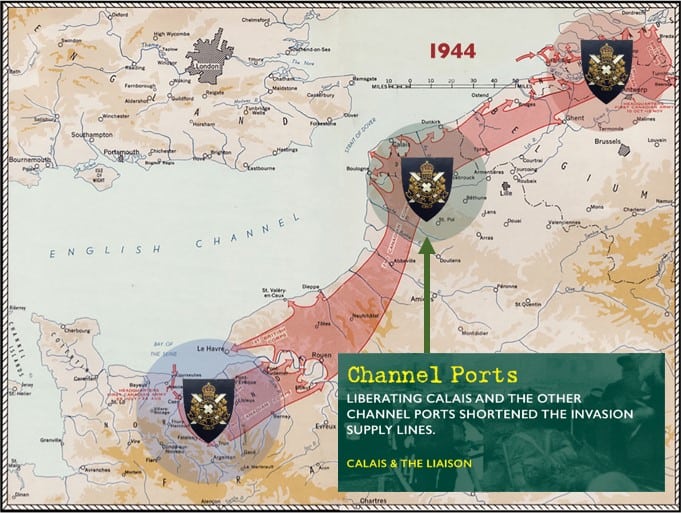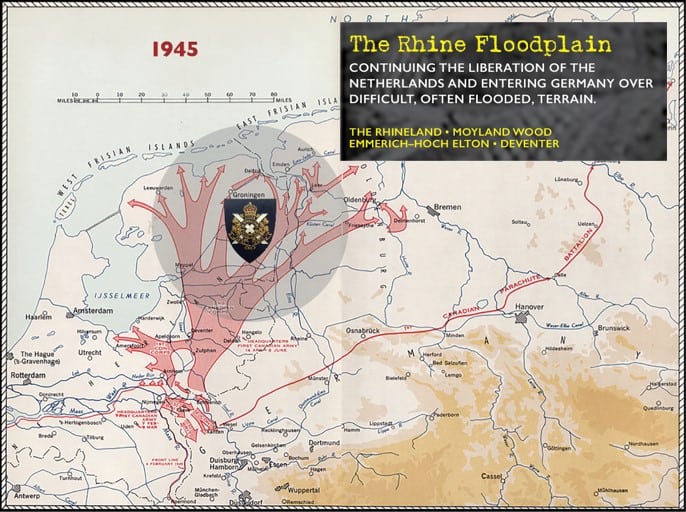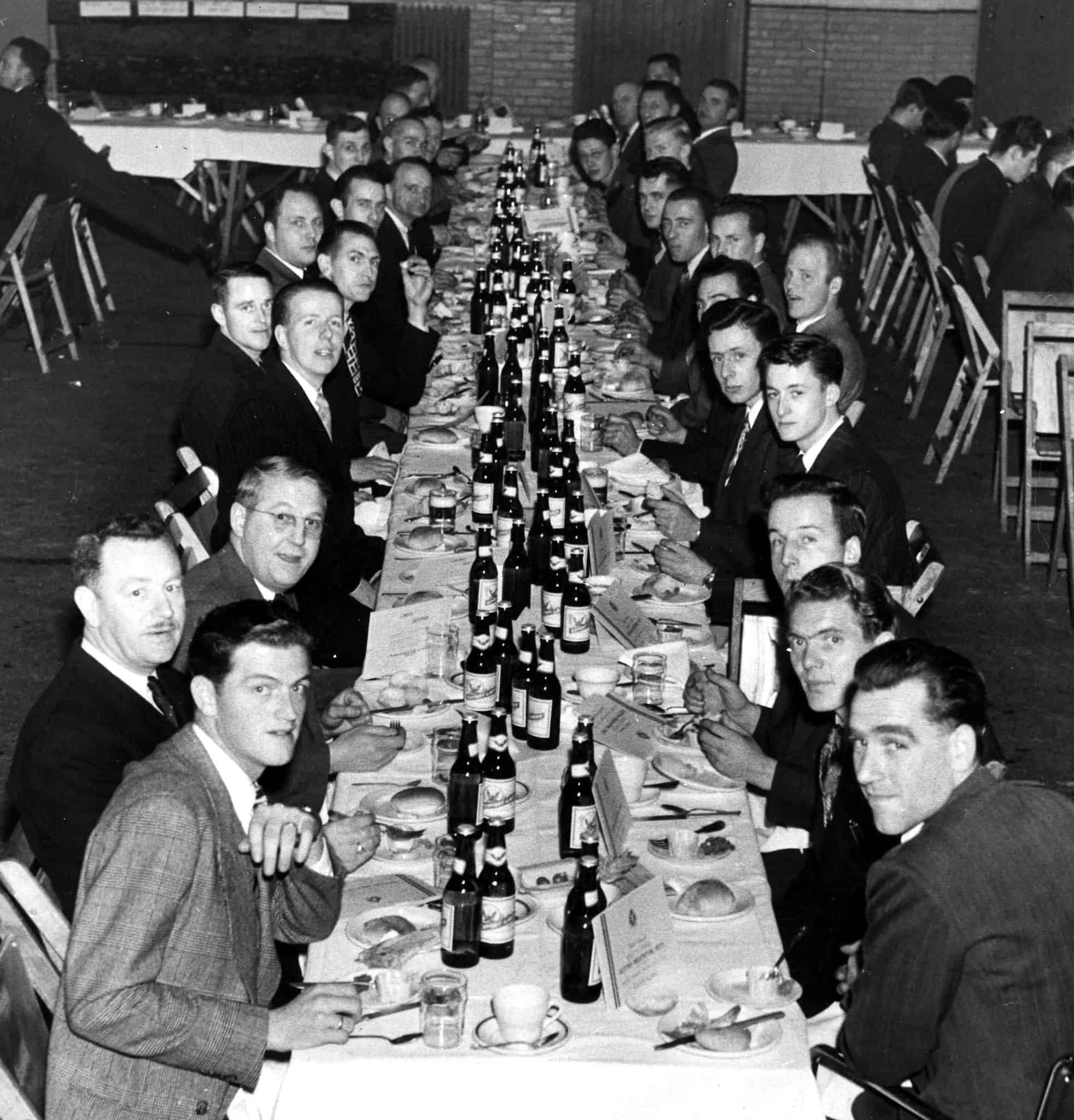History
Second World War
Mobilization and Training
On the 4th of August 1940, the 1st Battalion of the Canadian Scottish Regiment (CScotR) marched out of Macauley Point Barracks, marched to the inner harbour, boarded the S.S. Princess Elaine and left Victoria. It would be five and a half years before the Regiment returned home. After 10 months at Debert Military Camp near Truro, Nova Scotia, the CScotR sailed from Halifax on the 25th August 1941 on the P&O liner Stratheden heading for Glasgow, Scotland. The Regiment then moved on to the Salamanca Barracks at Aldershot, England. The Regiment spent the next three years getting “Ready for the Fray” an in June 1944 they went into the fray.
Into the Fray
After years of getting “Ready” the Regiment was now going into the fray.
The panel below is an overview of the Canadian Army’s involvement in the “Victory Campaign” and shows the four major areas of combat where the CScotR were awarded 18 Battle Honours: the Normandy Landings, the Channel Ports, the Scheldt, and North-West Europe. The 18 battle honours were awarded to the Regiment are shown on the panel.
This page can only provide a brief overview of the Regiments involvement in the Victory Campaign so please view the Learning page for more detailed sourced of information.
Normandy Landings
The Regiment went into the fray with the D-Day landing on the morning of 6th June 1944. After the six mile 90-minute run into the beach in assault landing craft (ALCs), “A” Company touched down about 50 yards from shore and waded through chest deep water under enemy mortar and machine gun fire. By the end of the day, the Company had made its way six miles inland where they dug in and sent our patrols.
On the 8th June, and enemy attack near Putot-en-Basin threatened to break through to the beaches. The CScotR counter-attack on the night of the 8th and morning of the 9th stopped the enemy advance. The Normandy Landing was a success, but the casualties were high. Between the 6th and 9th , 2 officers were killed and 7 wounded, 61 enlisted men were killed and 124 wounded, and 13 men were missing.
Caen and Falaise
Caen was an important Allied objective as it was an essential road hub, strategically astridethe Orne River and Caen Canal. Although an objective for D-Day, the Germans defended this stronghold with all their power. It took six weeks of fighting and heavy shelling to capture the capital of Normandy. After Caen was taken, the German army in Normandy was almost completely surrounded. Between the 2nd and 12th of August, the allies fought to close the gap at Falaise and prevent the German retreat. While, the battle resulted in the shattering of the German 7th Army, many enemy units escaped to fight another day. The Battle for Normandy was now complete.
Channel Ports
The taking of the Channel ports of Le Havre, Boulogne and Calais was essential for shortening supply lines to the advancing allied armies. These ‘fortress” cities had guns that could hit any shipping in the English Chanel and reach Dover. The Regiment was heavily involved in the taking of Calais.
Although the Chanel ports had been taken, it would take considerable time for the port facilities to be fully operational. Meanwhile, the Port of Antwerp in Belgium had been taken with the port facilities largely intact. The problem was the long Scheldt estuary into Antwerp was occupied by the German Army and no shipping could pass their heavy guns. With no rest after taking the Port of Calais, the CScotR were sent to the Scheldt.
Scheldt
The CScotR’s initial battle of the Scheldt campaign was to cross the Leopold Canal and prepare the way for a northward advance. This was a fierce battle with flame throws, canal crossing in small boats and over flimsy temporary bridges, grenade battles and hand-to-hand fighting.
The Regiment participated in the clearing of the south side of the Scheldt by taking the German’s large gun position at Breskens where the Scheldt estuary meets the North Sea. Fighting in the Scheldt was extremely difficult as the Germans had cut the dykes to let seawater flood the low-lying fields and the attackers were forced to follow narrow, fire- swept routes along the tops of dykes or to attempt amphibious assaults.
With the north side of the Scheldt also cleared by Canadian forces, the first allied convoy entered the port of Antwerp on the 28th November 1944, led by the Canadian-built freighter Fort Cararaqui.
Northwest Europe
The final months of the war saw the Canadians advance quickly north from the Rhine through the eastern Netherlands to the North Sea. The fighting, some of it fierce, continued nearly to the last day of the war. In the western Netherlands, getting food to the starving Dutch population in their flooded villages was the major task. Finally, there was a ceasefire, allowing food to be dropped by parachute or trucked in.
Demobilization
The Regiment spend some time in an occupation role until the 21st April 1946 when the remaining troops boarded the TSS Clan Lamont at Cuxhaven, Germany. They sailed to Tilbury Docks in London and then on to No. 4 Repatriation Depot at Witley Camp near Farnborough. The battalion was broken down into “wings” corresponding to the military districts in Canada where the men would be discharged. The Regiment’s fighting force in the Second World War stood down.
The 1st Battalion was given a tumultuous welcome home by the people of Victoria. A new era was about to begin.
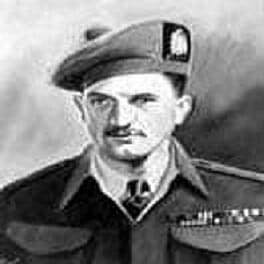
People in Focus
Sgt. Armando Gris
DCM, MM
Sgt. Armando Gris was awarded the Distinguished Conduct Medal (DCM) for single-handedly taking out an enemy gun emplacement that was blocking the advance of his unit near Calais, France in September 1944. The Military Medal (MM) was awarded for his efforts on the 7 th October 1944 at the Leopold Canal in the Netherlands. Gri was instrumental in preventing an enemy counter-attack from over-running Company Headquarters. After fighting off the enemy, his ammunition expended, the building on fire, his clothes burning from the intense heat, Gri was overwhelmed and taken prisoner. Gri concealed a pen knife from his captors and while in a railway goods van on a siding, he and others cut a hole in the side and escaped as the train was pulling away. With the assistance of Dutch resistance fighters, the escapees were able to make their way back to friendly lines.
After the war, Armando worked for construction companies across Canada. Born in Phoenix, BC in1918, he died January 1, 1991 in Vancouver age 72.


